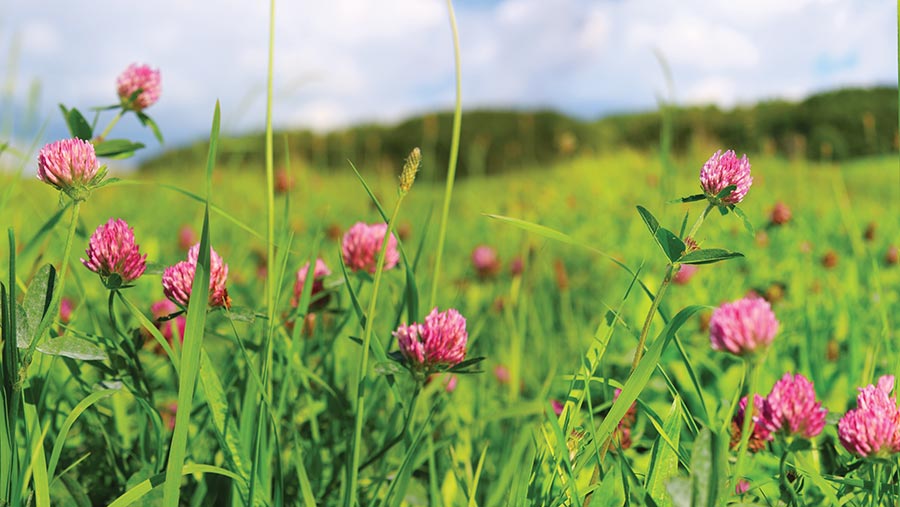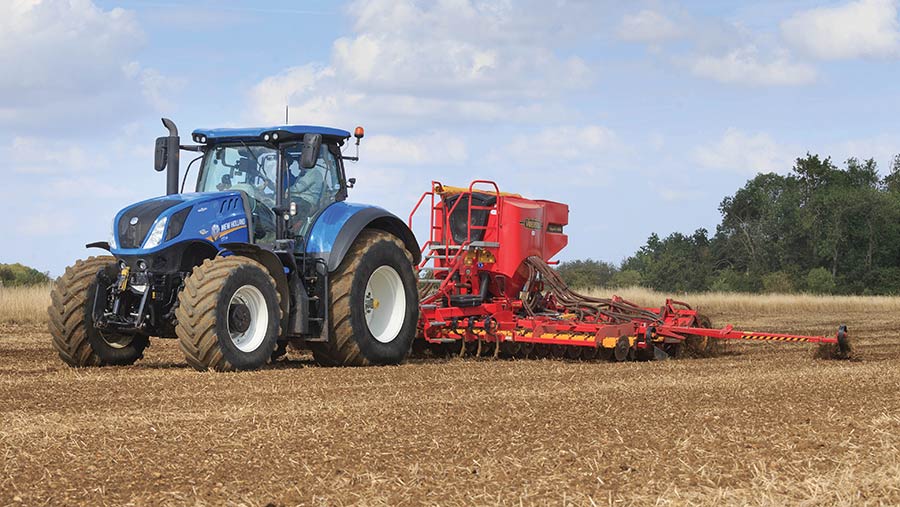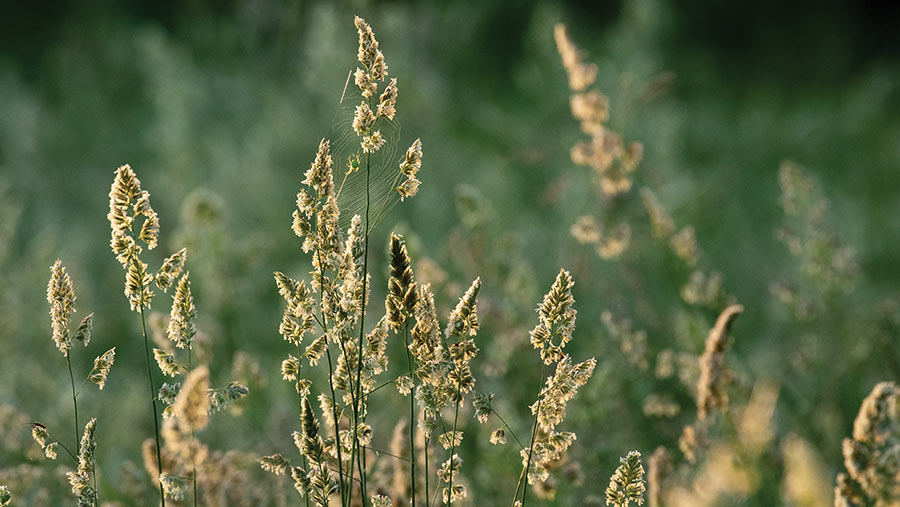How to maximise performance of NUM3 legume fallows
 © Swetlana Wall/Adobe Stock
© Swetlana Wall/Adobe Stock A mix of familiar and new actions make up the Sustainable Farming Incentive offer launched last September, which seeks to protect and improve the farmed environment through various sustainable farming practices.
One of the relatively familiar ones is NUM3 – legume fallow. It’s one of three nutrient management actions and is not dissimilar to AB15, the two-year legume fallow in Countryside Stewardship.
But there are some important differences between the two.
See also: SFI 2023: What’s on offer for arable farmers
Under the Sustainable Farming Incentive (SFI), the nutrient management actions are focused on optimising and managing the efficient use of nutrients, reducing costs and waste, and helping to improve farm productivity and resilience.
Environmentally, they should help improve water and air quality, increase biodiversity and reduce emissions through the reduced use of inorganic fertilisers.
The aim of NUM3, which, like AB15, is worth £593/ha, is to establish a legume fallow producing areas of flowering plants from late spring and during the summer months.
This, according to Defra, will help manage nutrient efficiency and improve soil health, provide food for farmland wildlife and support an integrated pest management approach by reducing grassweeds and encouraging natural crop pest predators, if located close to cropped areas.
A key difference between NUM3 and AB15 is that the SFI option can be moved every year, whereas AB15 has to remain in place until at least 15 August in the second summer after sowing.
It is the ability to move it around on farm, along with requiring an area to be producing flowers by late May, that has meant it is the most discussed SFI action in Oakbank Game and Conservation’s offices, says the company’s director, Ian Gould.
“The latitude in the rules for SFI, which allows it to be an annual option, has led growers to look at the opportunity to plant it in the spring and leave it in the ground for only six months,” he explains.
That potentially makes it an appealing spring break crop replacement, he acknowledges, if you can meet the action’s aim of having flowering plants from late spring (see “Why it might be difficult to meet NUM3 aims”).
Why it might be difficult to meet NUM3 aims
A key aim of NUM3 is to have flowering plants by late spring.
Guidance on Defra’s website suggests legume fallows will usually be established by the second spring after sowing, but that would be counter to what many growers are planning with the option, which is to plant in the spring and leave it in the ground for six months before planting an autumn cash crop.
Defra has not expressly ruled out that possibility in its guidance, supporting its oft-stated goal to give growers flexibility on how to achieve Sustainable Farming Incentive (SFI) action aims.
However, it does say if NUM3 is rotated around the farm, it must be left in for a period of time that could reasonably be expected to achieve the aim.
For an annual legume fallow, that suggests you would need to have flowering plants by late spring, says Oakbank Game and Conservation’s Ian Gould.
Again, there is no definition of what is meant by late spring in this context, but Oakbank considers it likely to mean by the end of May.
Species choice
That’s not impossible with fast-growing species such as mustard, buckwheat or phacelia, planted in early April, but it will be challenging in many soil types and locations where soils and/or weather might not be conducive to rapid development, Ian suggests.
“I fear that establishing in the spring risks not meeting the aims of the scheme, which is achieving a flowering crop by the end of May.”
It is relatively straightforward to remotely check whether areas are flowering, he points out.
“It’s an attractive option because of the payment, and if you get a good legume fallow crop growing it will do a lot of good for the soil, but be honest – can you genuinely expect it to be flowering by the end of May?”
In his opinion, only lighter land in the south of England genuinely has a consistent chance of meeting that aim from spring planting.
“It needs to be in soil that warms up early.”
Alternative option
The SFI 2024 option of growing a summer cover crop following an overwintered cover is perhaps a better alternative, which would also allow growers to spray off blackgrass in between, he points out.
“However, the proposed payment rate for this option is woefully inadequate when compared with NUM3 [£153-£163/ha versus £593/ha], even if growers are allowed to combine it with the SAM2 overwintered cover crop.”

© Tim Scrivener
Drilling
However, the most consistent way to meet the aims would be to plant in August/early September or in spring, when the legume fallow is planned to be left in place for at least two seasons.
“It’s important to sow when conditions are right, not just because of a calendar date,” Ian says.
“Typically, I would suggest a light surface cultivation to create a weed-free, fine, firm seed-bed with some tilth, prior to either drilling shallowly or broadcasting and rolling in.”
For autumn establishment, baling previous crop residue will also help reduce slug pressure, he says.
“Direct drilling can be successful in the right situation; the key is not putting these small seeds in too deep.
“I often find a drill is more effective because the metering systems are better on a drill than any sort of broadcasting equipment. It is very difficult to broadcast small seeds.”
Be careful of the herbicide history of previous crops, he warns. “We’re seeing quite bad effects from products such as diflufenican, clopyralid and sulfonylureas, particularly in direct-drill systems.”
Species
Autumn-planted and longer-term mixes for NUM3 are likely to be similar to what growers use for AB15, with and without added grasses.
Those include species such as red and alsike clovers, bird’s foot trefoil, winter vetch, sainfoin, lucerne and crimson clover.
Short-term spring-sown legume fallows are more likely to include annual clovers, such as berseem and crimson clover, combined with fast-growing flowering species such as phacelia, buckwheat and mustards, Ian suggests.
“Those will typically have a seed rate of 15-20kg/ha and cost about £80-£100/ha, while the mixes you expect to last a bit longer, that have more clovers, might cost £100-£120/ha.”
Where a longer-term legume fallow is planned, it’s also possible to add grass species such as perennial ryegrass or fescues, where blackgrass is a problem.
That might increase costs to about £150-£180/ha, he notes.

© Adobe Stock
Management
Not being able to graze this option, or cut it and use it for forage does make management trickier.
On the longer-term legume fallows, cutting to prevent grassweeds from heading is allowed, but some growers have struggled to improve grassweed situations when using this as an AB15 option, and this may mean it is not the best choice for fields with grassweed problems.
Otherwise, in-season management should be straightforward, but note that grazing, fertiliser or manure, or pesticides can’t be used, except certain herbicides for treating injurious or non-native invasive weeds, nettles and bracken.
“Perennial thistles can be a problem, as you can’t control them by mowing,” Ian adds. “So I wouldn’t use this option if I knew there was a legacy of thistle problems.”
Autumn-drilled cereals are a decent option to follow a legume fallow, particularly where grasses haven’t been part of the mix.
Whether it needs to be sprayed off before drilling will depend on what drill is available.
Disc drills that can deal with trash could be used to drill directly into the legume fallow, while tine drills will need it sprayed off a little in advance, he concludes.
What to do
- Must sow seed mix containing at least six flowering species, including legumes
- Possible legume species include: alsike clover, bird’s foot trefoil, black medick, common vetch and lucerne
- Seed mix can also include non-legume flower species and grasses, such as cocksfoot and timothy, which can help control blackgrass
What not to do once established
- Graze with livestock
- Cut it, except to prevent blackgrass from setting seed or to control other annual grassweeds
- Apply fertiliser or manure
- Use pesticides, except herbicides to weed-wipe or spot-treat certain injurious weeds, invasive species, nettles or bracken

